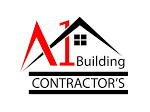The new residential construction chart for 2023 presents an exciting overview of the current trends and developments in the housing sector. As we delve into this year’s chart, it is evident that the landscape of residential construction is undergoing significant transformations. With a focus on sustainability, smart technology integration, and innovative design, the construction industry is poised to meet the demands of a modern clientele.
In 2023, there is a noticeable shift towards eco-friendly building practices. Builders and developers are increasingly adopting green materials and energy-efficient solutions to minimize environmental impact, aligning with global sustainability goals. Moreover, the integration of smart home technologies is no longer a luxury but a necessity. Homeowners are seeking enhanced connectivity and automation that provide convenience and security.
The chart also highlights the rise of accessory dwelling units (ADUs) as a popular trend. These units offer solutions for additional living space, rental income, or even multigenerational living arrangements. The flexibility and affordability of ADUs make them an attractive option for many homeowners, contributing to their growing popularity.
For those considering the benefits of ADUs or exploring more about the evolving trends in residential construction, now is the perfect time to take advantage of these opportunities. If you’re interested in building an accessory dwelling unit, our team at A1 Building Contractors is here to help you navigate the process with ease and expertise.
Understanding Key Metrics in Construction Charts
Deciphering the key metrics in construction charts is essential for gaining insights into the housing market’s current and future directions. These metrics serve as indicators that help stakeholders make informed decisions and strategize effectively. Understanding them can provide a comprehensive view of the industry landscape.
One of the most critical metrics is the housing starts, which refers to the number of new residential construction projects that have commenced during a given period. This metric is a strong indicator of economic health, as it reflects builders’ confidence and consumer demand. A rise in housing starts usually signals a robust market, while a decline may suggest economic challenges.
Another essential metric is the building permits. These are authorizations issued by local governments that allow construction to begin. The number of building permits issued can forecast future construction activity and economic trends, as a spike in permits often precedes an increase in housing starts.
Additionally, the construction completion rate is a vital metric that tracks the number of housing units completed and ready for occupancy. This figure helps assess the supply side of the housing market, providing insights into whether current construction is keeping pace with demand.
Lastly, understanding the average sales price of new homes is crucial. It reflects the market’s pricing trends and can signal shifts in consumer preferences and affordability. This metric is closely observed by developers and investors to tailor their offerings to market conditions.
By comprehending these key metrics, stakeholders can better navigate the complexities of the construction industry and strategically plan for future developments.
Conclusion on Residential Construction Insights
Reflecting on the extensive insights gathered from the 2023 new residential construction chart, it’s apparent that the residential construction industry is amidst a transformative era. The blend of sustainable practices, technological advancements, and demographic shifts are redefining how homes are designed and built.
Understanding these trends is crucial for builders, developers, and homebuyers alike. As we have explored, the demand for energy-efficient, smart, and adaptable living spaces continues to grow. This evolution not only meets the desires of modern consumers but also aligns with global movements towards environmental sustainability and efficient urban living.
For industry professionals, these insights offer a roadmap to future success, emphasizing the importance of innovation and adaptability in construction practices. For prospective homeowners, these trends highlight the exciting opportunities to invest in homes that are not only functional and aesthetically pleasing but also environmentally sound and technologically advanced.
If you’re considering expanding your living space or investing in a new home, now might be the perfect time to explore building an accessory dwelling unit. These structures offer flexible solutions for growing families, home offices, or additional rental income, and they align perfectly with the emerging trends we’ve discussed.
As the residential construction landscape continues to evolve, staying informed and adaptable will be key to harnessing the opportunities and navigating the challenges of this dynamic industry.

Leave a Reply
You must be logged in to post a comment.